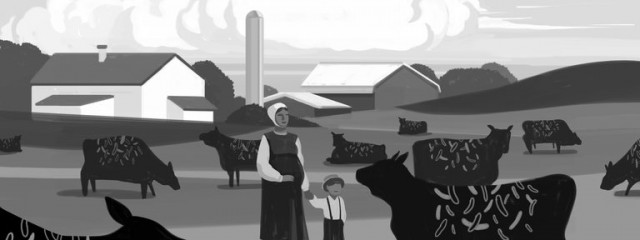In recent decades, the prevalence of asthma and allergies has increased between two- and threefold in the United States. These days, one in 12 kids has asthma. More are allergic.
The uptick is often said to have started in the late 20th century. But the first hint of a population-wide affliction — the sneezing masses — came earlier, in the late 19th century, among the American and British upper classes. Hay fever so closely hewed to class lines, in fact, it was seen as a mark of civilization and refinement. Observers noted that farmers — the people who most often came in contact with pollens and animal dander — were the ones least likely to sneeze and wheeze.
This phenomenon was rediscovered in the 1990s in Switzerland. Children who grew up on small farms were between one-half and one-third less likely to have hay fever and asthma, compared with non-farming children living in the same rural areas. European scientists identified livestock, particularly dairy cows, fermented feed and raw milk consumption as protective in what they eventually called the “farm effect.” Many scientists argued that the abundant microbes of the cowshed stimulated children’s immune systems in a way that prevented allergic disease.
Then, a few years ago, researchers found an American example of the phenomenon: the Amish. Children from an Amish community in Indiana had an even lower prevalence of allergies than European farmers, making them among the least allergic subgroup ever measured in the developed world.






